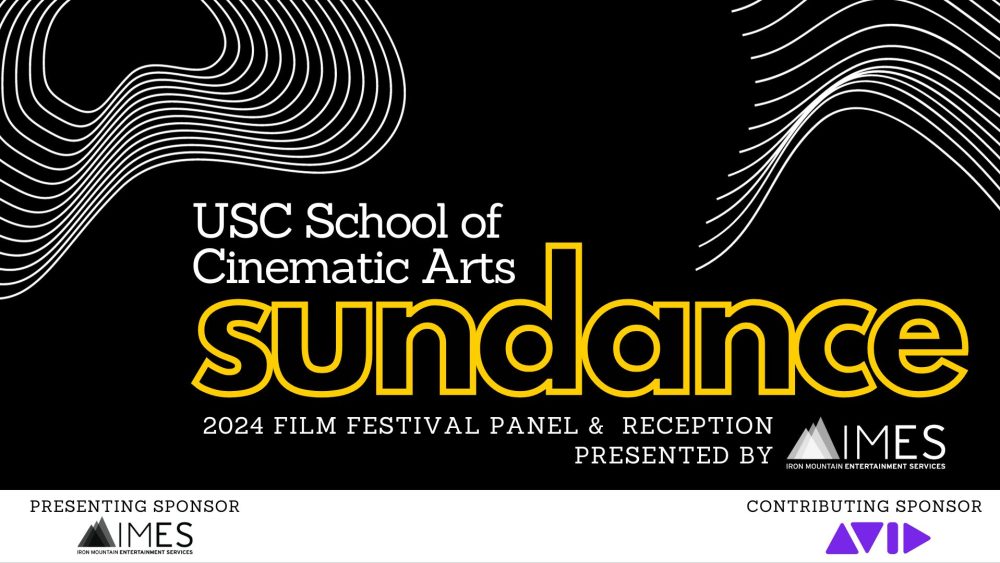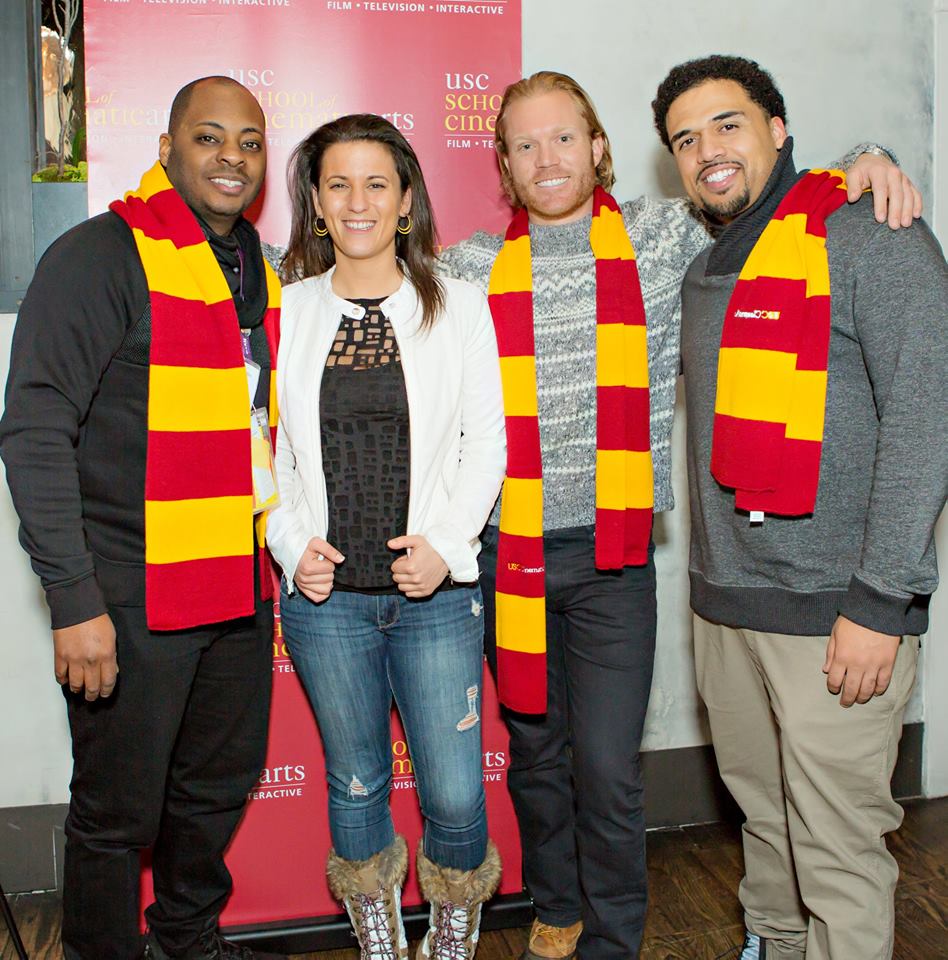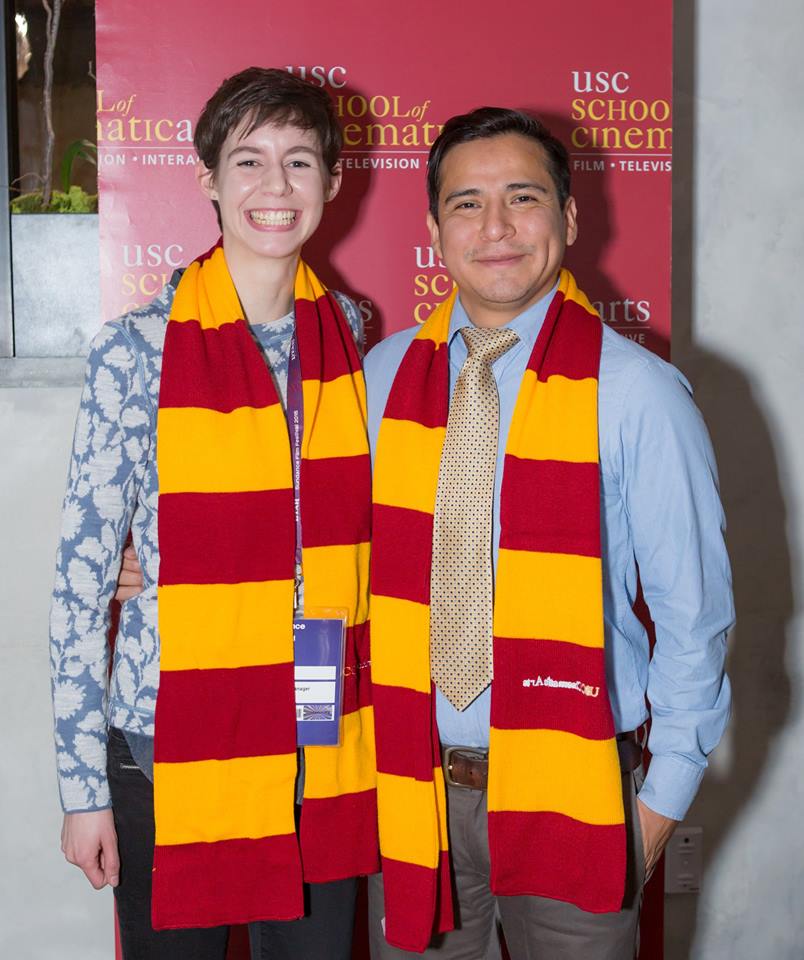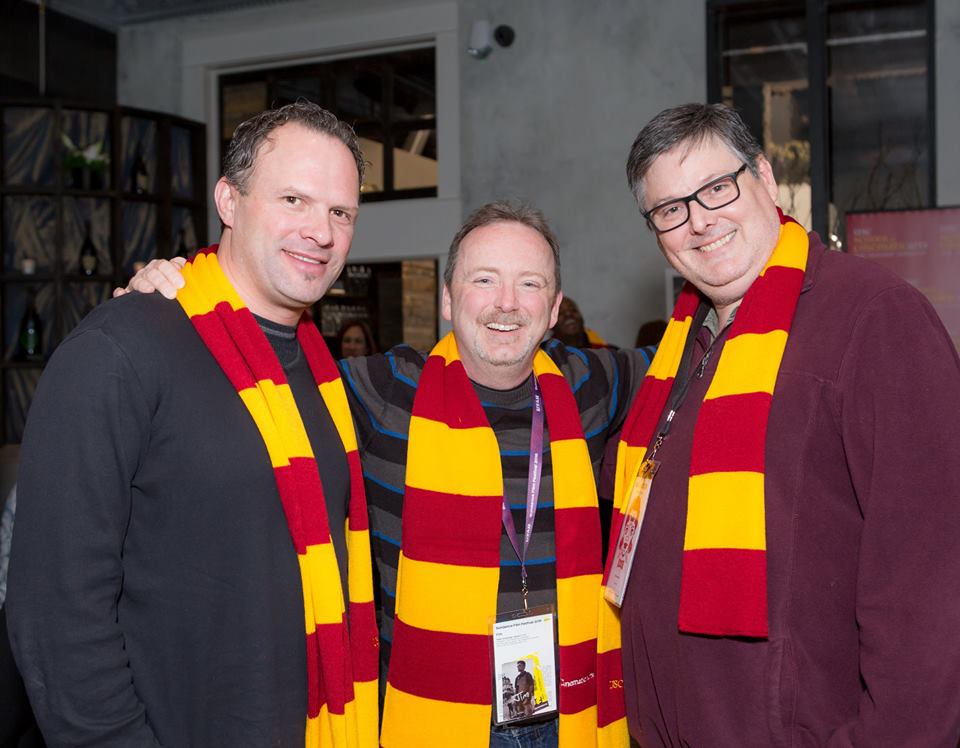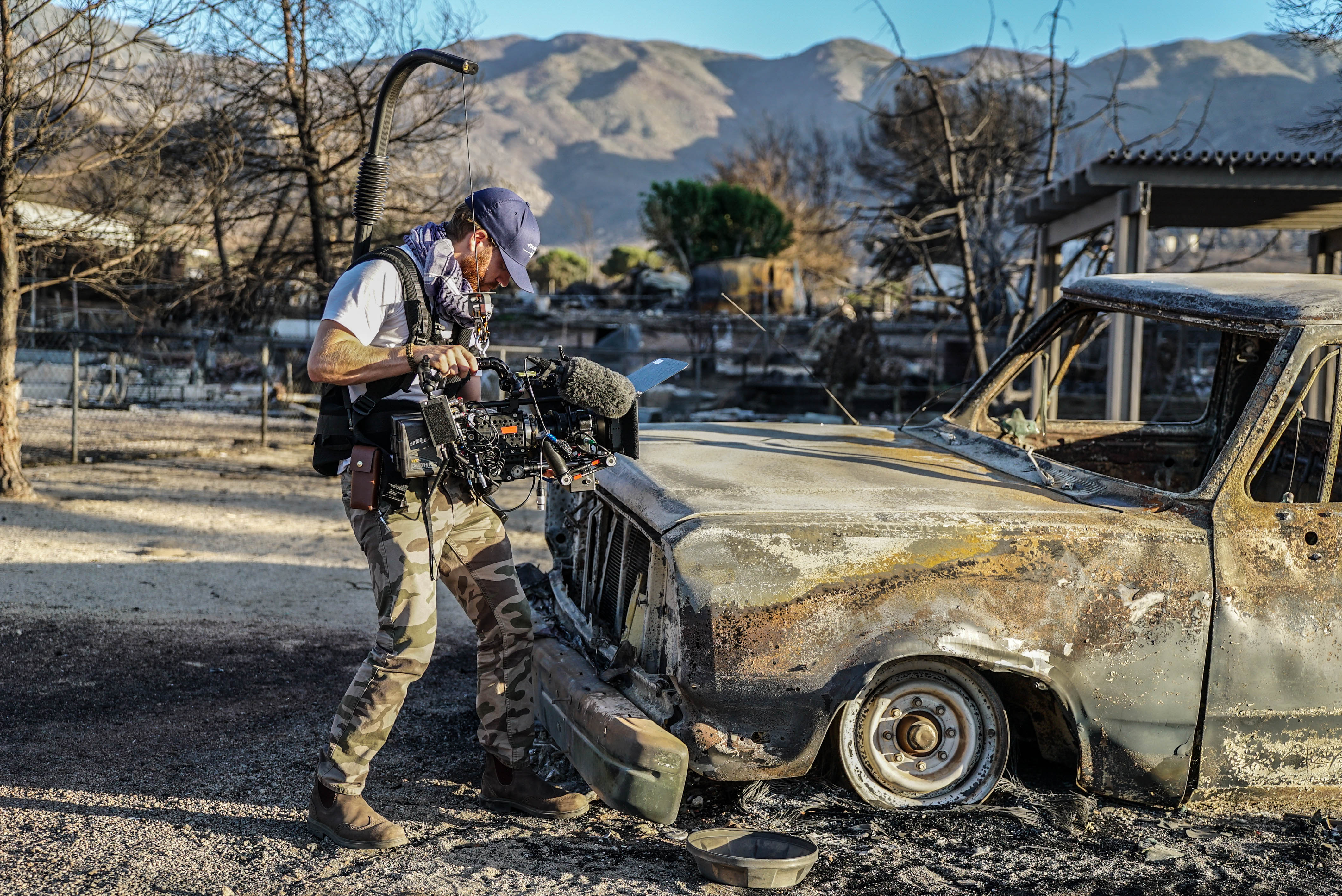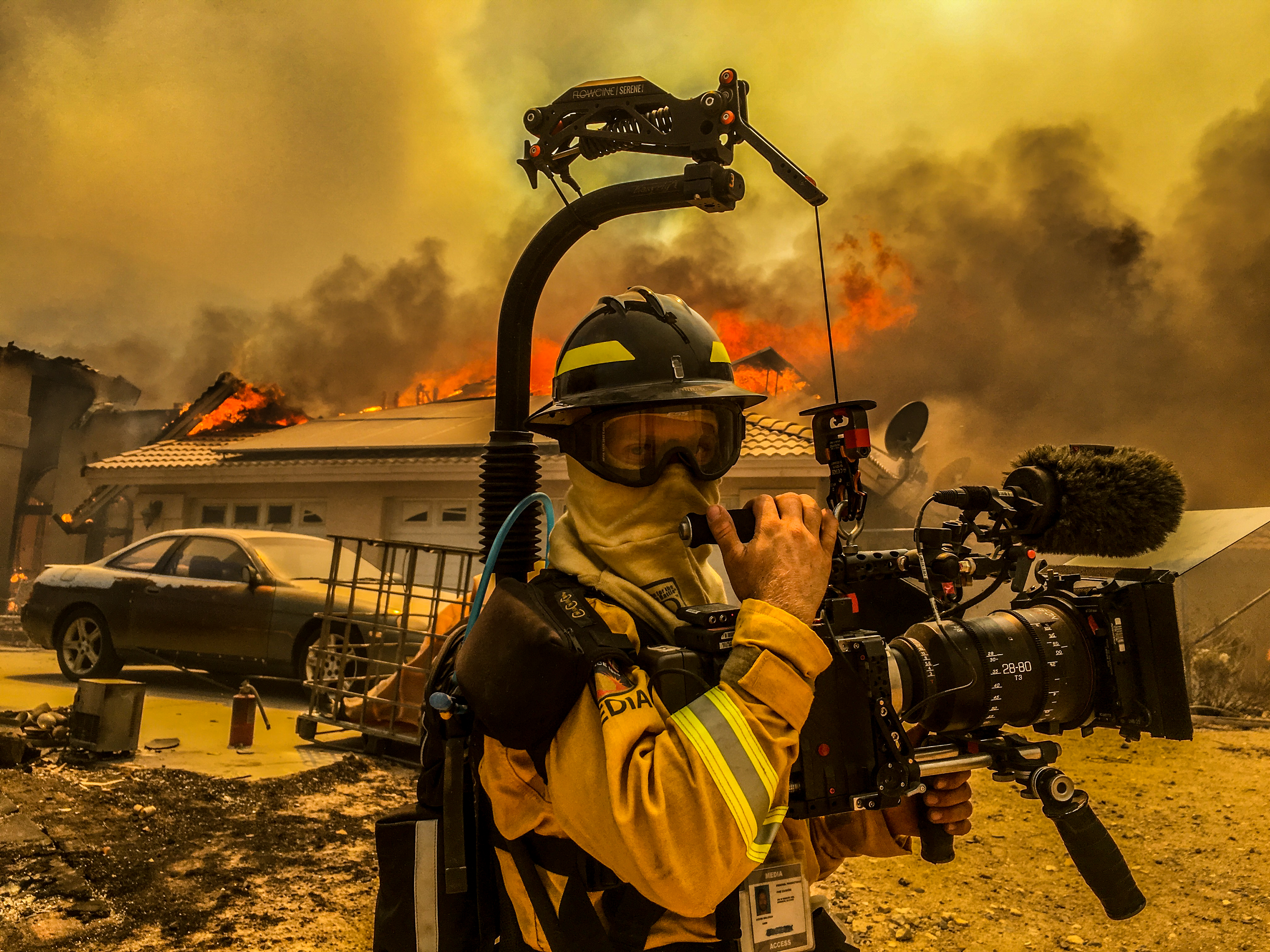This morning, filmmakers and media makers with projects at the 2018 Sundance Film Festival came together at the Riverhorse for a brunch. Looks like everyone had a great time!
Monthly Archives: January 2018
Sundance Trojan Spotlight: Steve Holleran
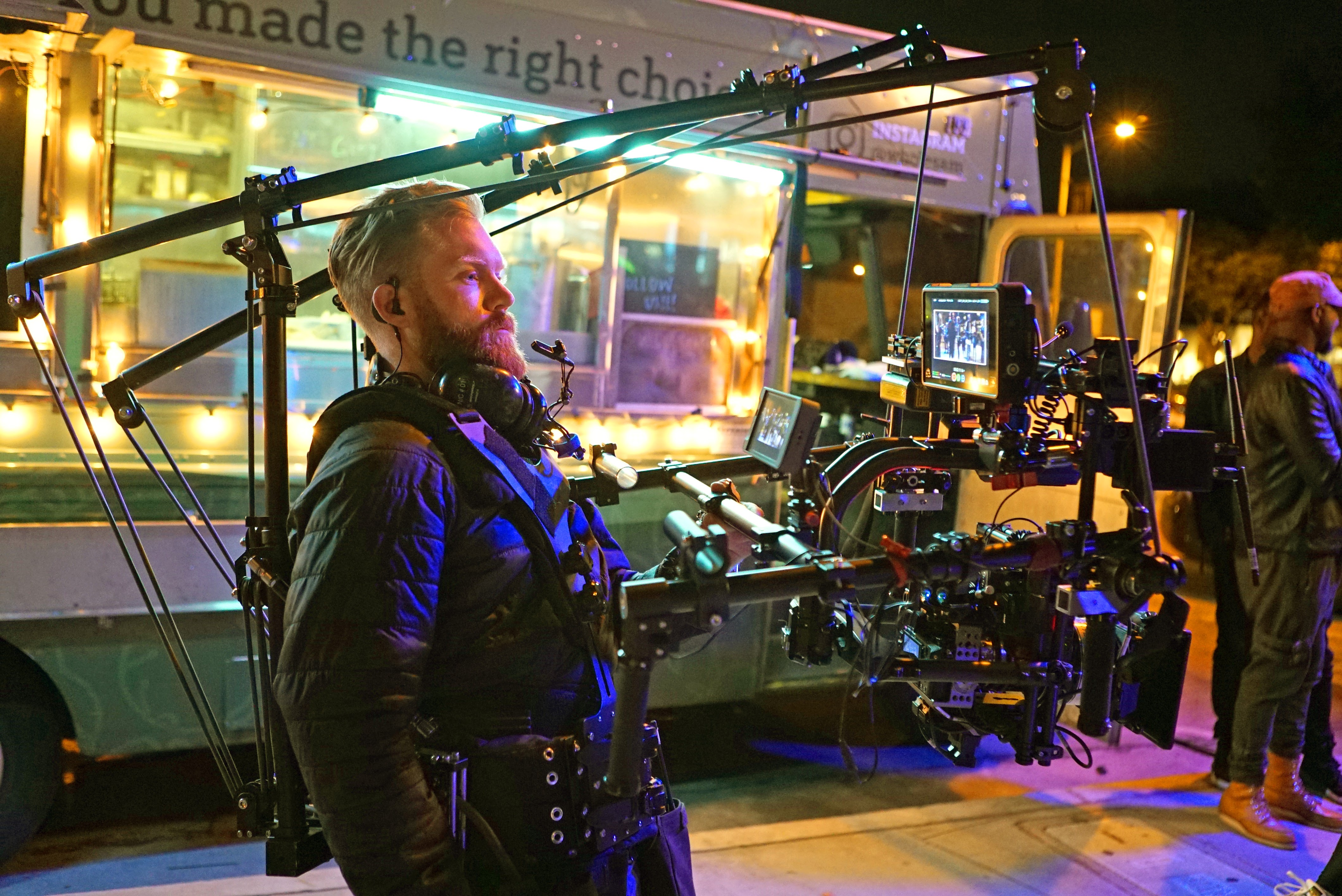 Let’s start with your name and graduation year. Hi I’m Steve Holleran and I graduated in 2013.
Let’s start with your name and graduation year. Hi I’m Steve Holleran and I graduated in 2013.
So we’re here to talk about your Sundance film A Boy A Girl A Dream. Can I get a quick pitch? It’s about two strangers who fall in love the night of the presidential election last year. The film is shot as a single take oner which immerses us in the last ninety minutes of the election. It stars Meagan Good and Omari Hardwick and was directed by Qasim Basir. It premieres next week at Sundance.
What was your role on the project? I was the cinematographer on the film.
How did you get involved with the project? There was a lot of serendipity with the way the film came together. The director Qasim Basir and I had actually met in person at the Laemlee in Hollywood when my last Sundance feature, The Land, came out in theatres in 2016. We met again to talk about A Boy A Girl A Dream the day of the Women’s March last year. I remember we found this hole in the wall coffee shop in the LA Arts District and talked for
hours about not only the film but about life. It was clear by the end that we were going to do the movie together. It felt like a great fit not only for our similar creative sensibilities but our outlook on life and the future of our country. We both wanted to create a film that said love and hope trumps hate.
Were you excited or worried? About the one take? It was a mixture. I’d always wanted to do a oner but — at the same time — we had some pretty serious constraints on the film in terms of time and budget. It was a difficult challenge to make it seamless but at the end of the day we decided it was the right way to tell the story.
On a technical level it was very exciting because I was able to bring together a lot of technology that hadn’t been used on a feature or a oner before. I had tested the prototype rig called the Anti-Gravity Cam on my Netflix series “Fire Chasers” which came out last fall. The rig is body mounted so it revolutionizes gimbal use and stabilized shots in general. With the rig you can move the camera from zero feet to nine feet and pan and tilt it all around like a mini jib. It’s like combining a remote head, jib, and steadicam into one mobile device. I’d never seen another feature shot in this fashion and for the mobile needs of the production it was a perfect fit.
What were some of the technical problems that you have to overcome to shoot in that style?
The camera had to follow our actors into a lot of live cramped and crowded spaces where crews don’t fit easily. You quickly realize in these environments that ceilings aren’t as tall as they seem and doorways aren’t as wide. Fitting through nightclub hallways, doing three sixty rotating shots, and keeping up with the actors moving at full speed was the ultimate film ballet. We even had to get the camera into a car without cutting. Twice. It required us to find a way to dismount the camera mid shot from the rig to temporarily hand it off to another operator in the car. We started calling it the Frankenstein rig due to its unique build and requirements. Since then named everything from the Terminator to the Preying Mantas!
I was looking over your IMDB and it seems like your projects have a wide variety. How do you go about choosing what you’re going to work on?
I’ve shot two features since graduating in 2013, both which have have premiered in the NEXT category at Sundance. With these films, I gravitated towards the underdog narrative. The Land is a story about kids trying to make it from the rough part of town in Cleveland. In A Boy A Girl A Dream its two strangers inspiring each other to follow their dreams when the world seems to be falling apart.
On my Netflix original series Fire Chasers, again it’s the story of the underdog, in this case people banding together in the face of an insurmountable enemy, wildfire. There’s a very strong dynamic of good versus evil in my work and I find it’s that conflict which inspires me and attracts me to a project.
So you graduated in twenty thirteen. Do you remember your decision to come here?
It was a circuitous route coming to USC but in retrospect it makes a lot of sense. I grew up in San Diego but my family has been in Los Angeles for five generations so SC has been a big part of my life whether through the watching the football team at family gatherings, studying film legends like Lucas, or alumni in the family. I applied as an undergrad but actually didn’t get into the film program so I decided to go east to Bowdoin College in Maine where I studied history. My passion for film persisted and pushed me to apply for a post-graduate grant called The Watson Fellowship. The fellowship affords 40 graduating seniors from across the country individual grants to leave the country for one whole year to pursue a project they each design. I was awarded one in 2008 and set off to create a feature length environmental documentary about overfishing in the Pacific. For one year, I lived on my own in fishing villages across Samoa, Chile, and New Zealand shooting and editing a project that became much bigger than I had ever imagined. It was doing this documentary on the edge of the world that taught me volumes about filmmaking and eventually became my submission film to USC’s MFA program.
Cinematography isn’t the first thing you hear from students. We have a long history of it but most people think directors producers and writers. What was USC right for you — as a cinematographer?
What I wanted to learn at USC was story. Knowing how to talk about a story is an essential element in a cinematographers bag of tricks and in my opinion, out of all the film programs, USC is the king of narrative. Whether it was the script writing classes, directing exercises, or budgeting meetings, we constantly came back to how each element of a film was tied into the story. I learned how the narrative connected to each shot that I wanted to create rom the lighting to camera placement and movement. This was a powerful tool for me and one that has come in handy over and over again on every set I’ve been on. So in that sense I think USC is a wonderful school of cinematographers.
If you can take yourself back to your time here what are some lessons that you learned here — navigating the School of Cinematic Arts — that you feel a student should know before they get here.
School is what you make it and USC’s School of Cinematic Arts has a ton of different opportunities. I quickly learned to hone in on what I loved to do and to squeeze every little bit of juice out of each moment. Plus the school is loaded with of lots of like-minded young artists so it’s an ideal moment to begin collaborating.
Were there individual professors or classes that really formed you as an artist?
Yes my 507 instructor Larry Carroll.
That’s the first production class? Yes. And I remember one moment after we screened our first films, Larry brought me up to the front of class and said, “What did you do wrong?” I remember saying, “Nothing.” Then he pointed out that I had committed a cardinal rule as a cinematographer and had crossed the line in one of my dialogue scenes with the character’s eyelines. That moment really stuck out to me.
What’s “the line?” It’s an imaginary line that you draw in a scene between two or more characters in which you get to place your camera to maintain an eyeline. There’s all sorts of different rules about it and you can break it but at the time I didn’t understand it’s applicability and I was just blowing it. In front of the class.
I had another instructor, Chris Chomyn — who taught my cinematography class. He had me come up in front of the class one day and pick up a C-Stand, a metal stand on which you can place a variety of lights and other grip related items. I picked it up by the inside collar and Chris instantly grabbed the outside arm which pinched my hand inside the stand. He literally held it up for the class to see with my hand stuck between the stand and I’m sure a look of shock and pain on my face. He said “This is why we don’t pick up the C-stand from the inside.” I never forgot it.
These two lessons drilled home a dedication to craft and the notion that there’s a set of rules in the film industry that’s standardized. It’s stuck with me to this day.
Where can people find more about your film?
LINKS
@stevenholleran
